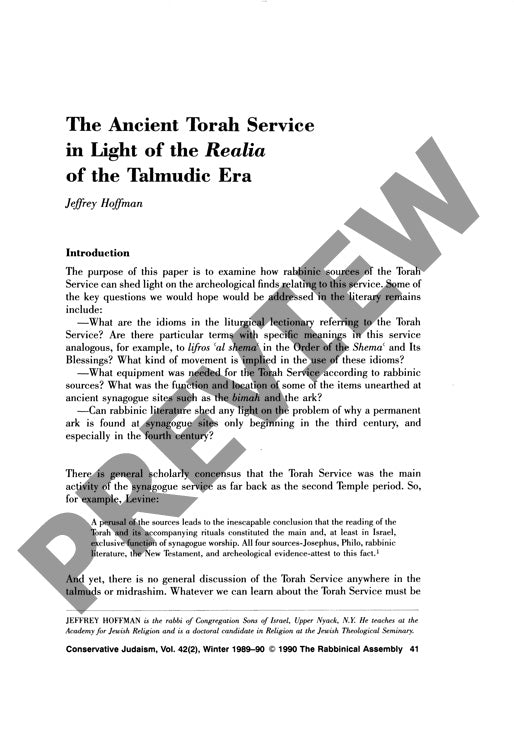The Ancient Torah Service in Light of Th
Couldn't load pickup availability
Early synagogues lacked the permanent Torah arks that became fixtures of Jewish worship, revealing a complex interplay between rabbinic authority and popular religious expression during the Talmudic era. Through systematic analysis of liturgical terminology across Talmudic and Midrashic literature, coupled with archaeological findings, distinct patterns emerge in how Jewish communities approached Torah storage and ritual. Common assumptions about terminology for approaching the ark (*yored*/*'over lifne hatevah*) prove inconsistent with physical evidence, suggesting these terms did not necessarily indicate downward movement to a lower-positioned ark. Rabbinic sources describe various mobile furnishings - portable arks, *bimah* chairs, curtains, and reading implements - while archaeological evidence shows permanent arks emerging only from the third century CE, coinciding with rising Christian influence. The notable absence of explicit Torah service procedures in early rabbinic literature points to a deeper tension: rabbinical reluctance to codify Temple-like rituals while maintaining hope for the Temple's reconstruction. This hesitancy suggests that architectural innovations in synagogues, particularly the installation of permanent arks, stemmed from grassroots acceptance of Temple symbolism rather than official rabbinic decree.

More Information
-
Physical Description
-
Publication Information
Published 1989-1990
ISBN
-
Publication Credits
Jeffrey Hoffman

